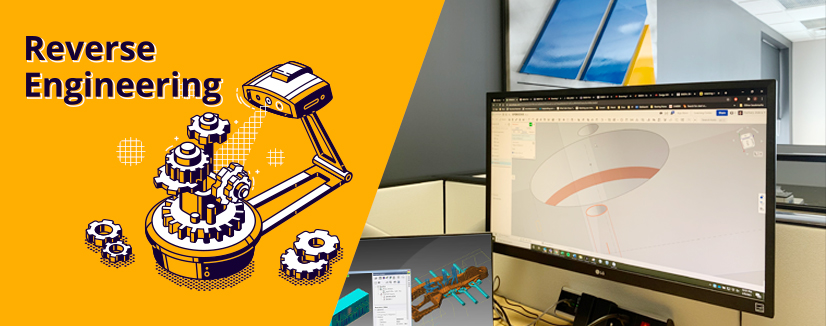Introduction
Today, manufacturing technologies are synonymous with rapid and reliable production processes. It would be fair to say that your manufacturing process is different from others. But despite your unique method, you can now have access to components to make your production process faster and more efficient.
The question is, “why” and “how” the process for outsourcing parts has become so quintessential in the manufacturing industry.
Now, to help you understand this question, lets’ take a look at the role, importance, and process of reverse manufacturing:
What is Reverse Engineering
Reverse engineering in industrial manufacturing has come a long way in the last decade. With the help of reverse engineering, there are several available options to produce fully functional and improved components. Reverse engineering has become the answer for industrial manufacturers seeking cost savings.
At its core, reverse engineering or back engineering is a perfect method to disassemble product parts and determine how it was crafted in the first place. You can also apply this process to programming code for electronic devices. The idea is to increase shared knowledge of complex manufacturing processes.
Reverse Engineering and Print Generation
When manufacturers can get their hands on core product components with ease, it becomes possible to improve a specific product part or uncover new solutions. On top of improving the effectiveness of a product, you can protect product patents and improve multiple production processes.
You can apply advanced reverse engineering in many cases. You can use it to reproduce worn out or broken components whose extra parts are not easily accessible or no longer exist. And this is where the reverse engineering process turns the impossibility into the possibility of accessing those product parts.
It means no more quality compromises or production delays. Traditionally, you will have to halt the production and bear the burden of time and money due to the inaccessibility of spare production parts. But outsourcing production parts to reinforce your supply chain, enables you to maintain a consistent production flow.
Software Used to Create New Prints
When you combine the reverse engineering process with high-performance printing, you can quickly replace and reconstruct worn or broken components at a moment’s notice and resume the operational status. This sense of immediacy is what makes reverse engineering crucial to the future of industrial manufacturing.
With dedicated software, you can reconstruct a T-shaped bracket attachment through a reverse engineering process, professional laser sintering technology, and reinforced carbon-fiber composite material. For instance, you can fix a T-shaped bracket attachment for a large linear actuator.
You can use various CAD and precise 3D modeling software to reconstruct and render a specific product component in little to no time. You can practically ensure the complete restoration of the primary structure and functions of the machine.
Conclusion
Mechanical Power’s modern reverse engineering capabilities can improve your entire manufacturing process. Once you understand this cause-and-effect process, the high demand for globally outsourced manufacturing parts makes more sense.
With new tech advancements on the horizon, it will be interesting to see how reverse engineering evolves and revolutionizes industrial manufacturing methods.
Mechanical Power will be closely monitoring advances in the tech world that further enhance our capabilities to help OEM customers with reverse engineering initiatives and serving as an extension of their quality, engineering, and supply chain departments.

Resourceful and innovative Marketing Pro, with 20+ years of progressive experience in the marketing and creative technology industry. Responsible for digital and traditional marketing efforts that promotes brand awareness, increases engagement, and drives revenue.
















